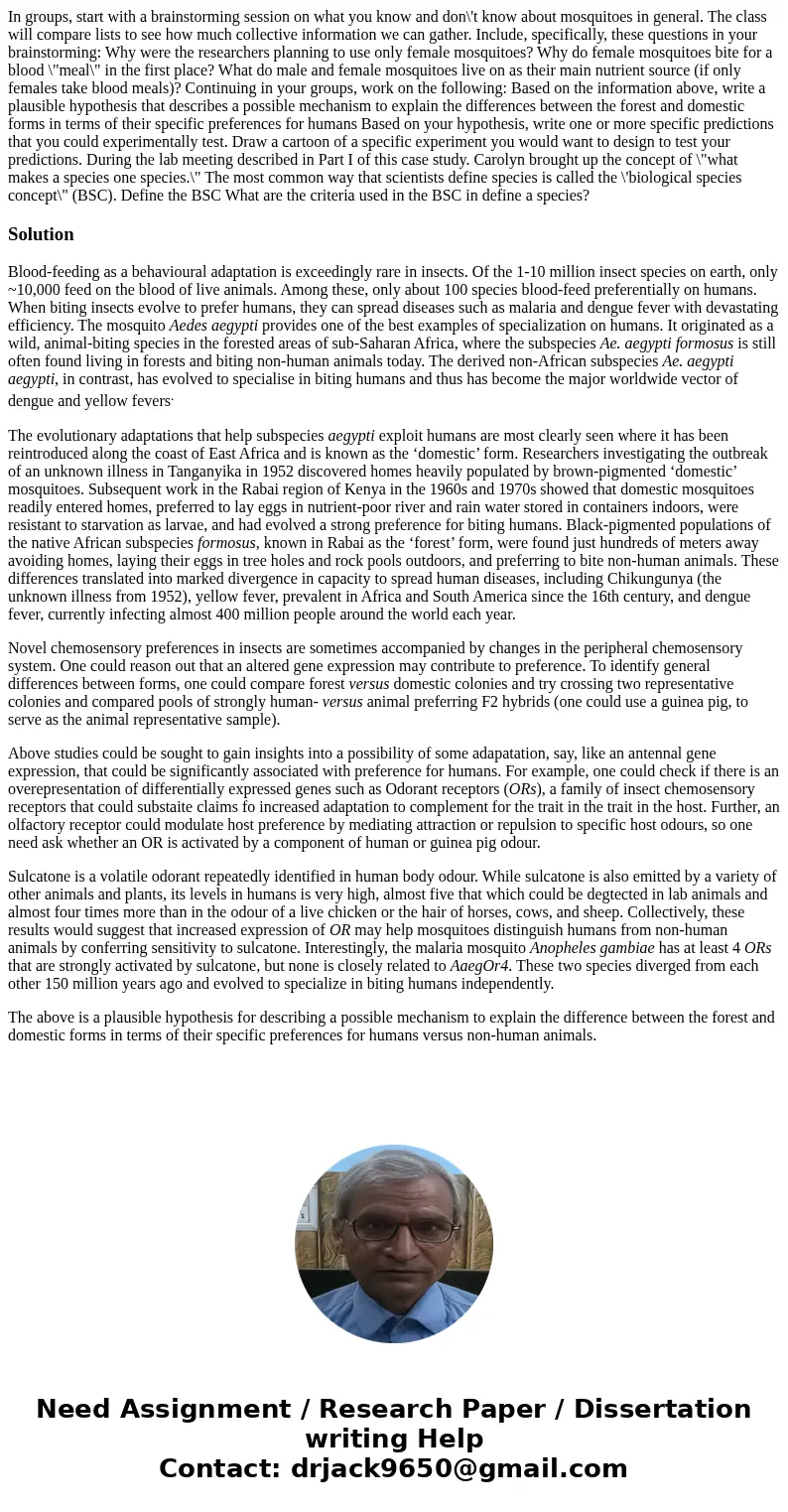In groups start with a brainstorming session on what you kno
Solution
Blood-feeding as a behavioural adaptation is exceedingly rare in insects. Of the 1-10 million insect species on earth, only ~10,000 feed on the blood of live animals. Among these, only about 100 species blood-feed preferentially on humans. When biting insects evolve to prefer humans, they can spread diseases such as malaria and dengue fever with devastating efficiency. The mosquito Aedes aegypti provides one of the best examples of specialization on humans. It originated as a wild, animal-biting species in the forested areas of sub-Saharan Africa, where the subspecies Ae. aegypti formosus is still often found living in forests and biting non-human animals today. The derived non-African subspecies Ae. aegypti aegypti, in contrast, has evolved to specialise in biting humans and thus has become the major worldwide vector of dengue and yellow fevers.
The evolutionary adaptations that help subspecies aegypti exploit humans are most clearly seen where it has been reintroduced along the coast of East Africa and is known as the ‘domestic’ form. Researchers investigating the outbreak of an unknown illness in Tanganyika in 1952 discovered homes heavily populated by brown-pigmented ‘domestic’ mosquitoes. Subsequent work in the Rabai region of Kenya in the 1960s and 1970s showed that domestic mosquitoes readily entered homes, preferred to lay eggs in nutrient-poor river and rain water stored in containers indoors, were resistant to starvation as larvae, and had evolved a strong preference for biting humans. Black-pigmented populations of the native African subspecies formosus, known in Rabai as the ‘forest’ form, were found just hundreds of meters away avoiding homes, laying their eggs in tree holes and rock pools outdoors, and preferring to bite non-human animals. These differences translated into marked divergence in capacity to spread human diseases, including Chikungunya (the unknown illness from 1952), yellow fever, prevalent in Africa and South America since the 16th century, and dengue fever, currently infecting almost 400 million people around the world each year.
Novel chemosensory preferences in insects are sometimes accompanied by changes in the peripheral chemosensory system. One could reason out that an altered gene expression may contribute to preference. To identify general differences between forms, one could compare forest versus domestic colonies and try crossing two representative colonies and compared pools of strongly human- versus animal preferring F2 hybrids (one could use a guinea pig, to serve as the animal representative sample).
Above studies could be sought to gain insights into a possibility of some adapatation, say, like an antennal gene expression, that could be significantly associated with preference for humans. For example, one could check if there is an overepresentation of differentially expressed genes such as Odorant receptors (ORs), a family of insect chemosensory receptors that could substaite claims fo increased adaptation to complement for the trait in the trait in the host. Further, an olfactory receptor could modulate host preference by mediating attraction or repulsion to specific host odours, so one need ask whether an OR is activated by a component of human or guinea pig odour.
Sulcatone is a volatile odorant repeatedly identified in human body odour. While sulcatone is also emitted by a variety of other animals and plants, its levels in humans is very high, almost five that which could be degtected in lab animals and almost four times more than in the odour of a live chicken or the hair of horses, cows, and sheep. Collectively, these results would suggest that increased expression of OR may help mosquitoes distinguish humans from non-human animals by conferring sensitivity to sulcatone. Interestingly, the malaria mosquito Anopheles gambiae has at least 4 ORs that are strongly activated by sulcatone, but none is closely related to AaegOr4. These two species diverged from each other 150 million years ago and evolved to specialize in biting humans independently.
The above is a plausible hypothesis for describing a possible mechanism to explain the difference between the forest and domestic forms in terms of their specific preferences for humans versus non-human animals.

 Homework Sourse
Homework Sourse